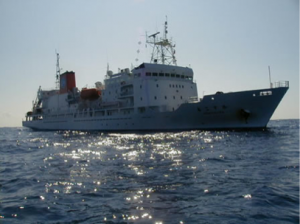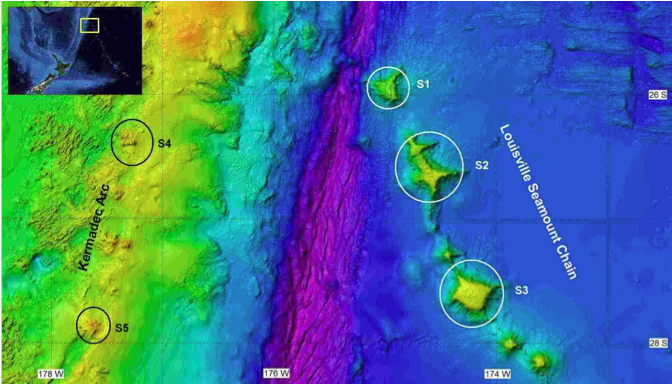Scientists Explore New Zealand s Deep Sea (Part I)
The Shinkai 6500, a submersible able to descend to 6.5km under the surface, and explore many of the deepest parts of the ocean. Image: JAMSTEC
The JAMSTEC research vessel RV Yokosuka sailed from Nuku’alofa in Tonga this morning, heading towards New Zealand to explore the animal life on deep undersea mountains, or seamounts. A team of 14 scientists from Japan and New Zealand, 41 ships officers and crew are on board.
The Yokosuka is the mother ship for the human-operated Shinkai 6500, one of the world’s most advanced deep diving submarines. The Shinkai 6500 is capable of diving 6.5 km below the ocean surface. If you want to study the ecology of the deep sea, what better way to do this than climb into a submersible, descend to the seafloor, press your face to a window and let your eyes collect data? On each of its eight-hour planned dives during the voyage, the Shinkai 6500 will carry two pilots and a researcher.
The research vessel Yokosuka, which is the home of the Shinkai 6500 submersible. Credit: JAMSTEC
The research will focus on two regions of seamounts about 1000 km northeast of New Zealand, the Louisville Seamount Chain and the Kermadec Arc. Both areas are volcanic in origin but differ based on their tectonic setting: one is the result of intraplate volcanism and the other is the result of subduction volcanism. The Louisville seamount chain formed 70 million years ago as the Pacific tectonic plate moved over a ‘hot spot’ of magma, generating a line of volcanoes with the youngest immediately above the hot spot and the oldest the furthest away (where we are surveying). In contrast, the Kermadec Arc seamounts are active volcanoes, many of which have erupted in the last few years. They often host unique organisms found at sites of hydrothermal venting.
The voyage will be the first detailed biological investigation of the area. It is expected that the scientists will find species that have not previously been seen. An important feature of the survey is that the submersible will have very little impact on the seafloor as it hovers several meters above the bottom, taking continuous video footage and only sampling when the scientists direct the capture of specific specimens, rocks, water or sediment.
The first dive is scheduled on one of the Louisville seamounts on 26 October. More on the actual dives is coming in the second installment of this two-part series.
The survey areas of the Louisville Seamount Chain and northern Kermadec Arc. Credit: JAMSTEC/NIWA
Follow Scientific American on Twitter @SciAm and @SciamBlogs. Visit ScientificAmerican.com for the latest in science, health and technology news.
© 2013 ScientificAmerican.com. All rights reserved.



